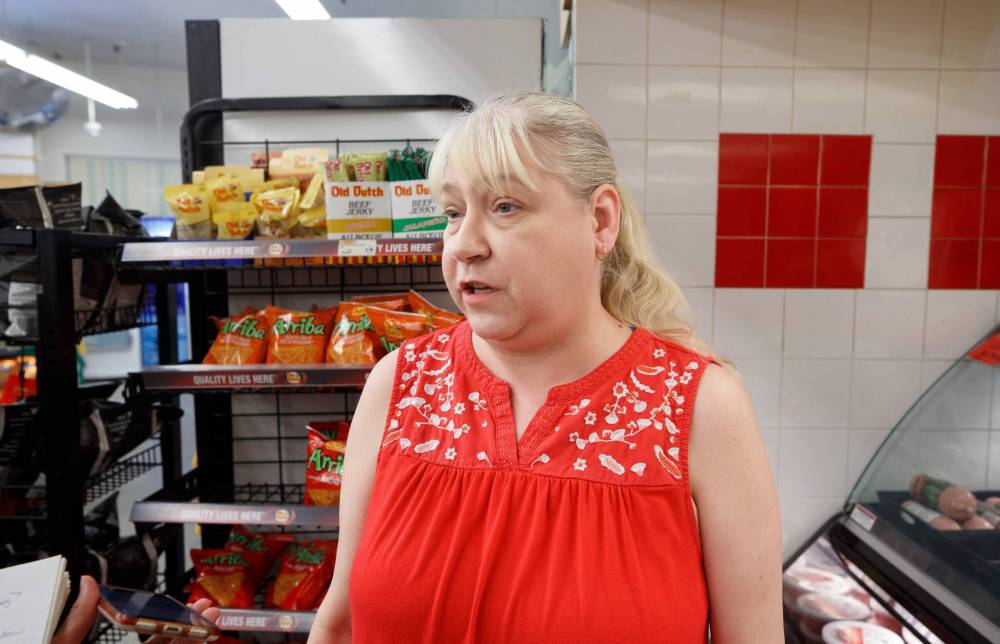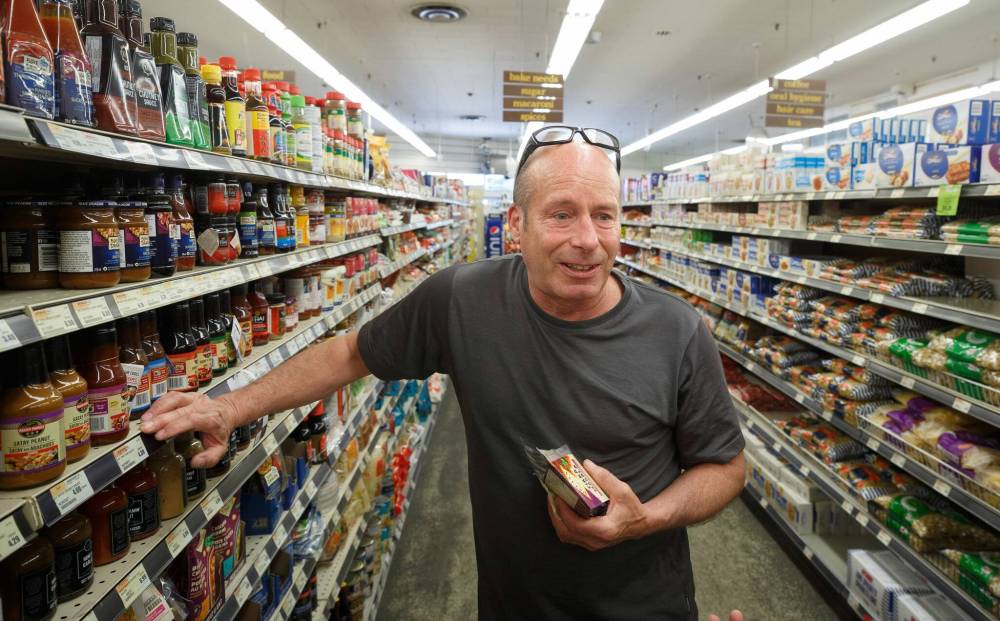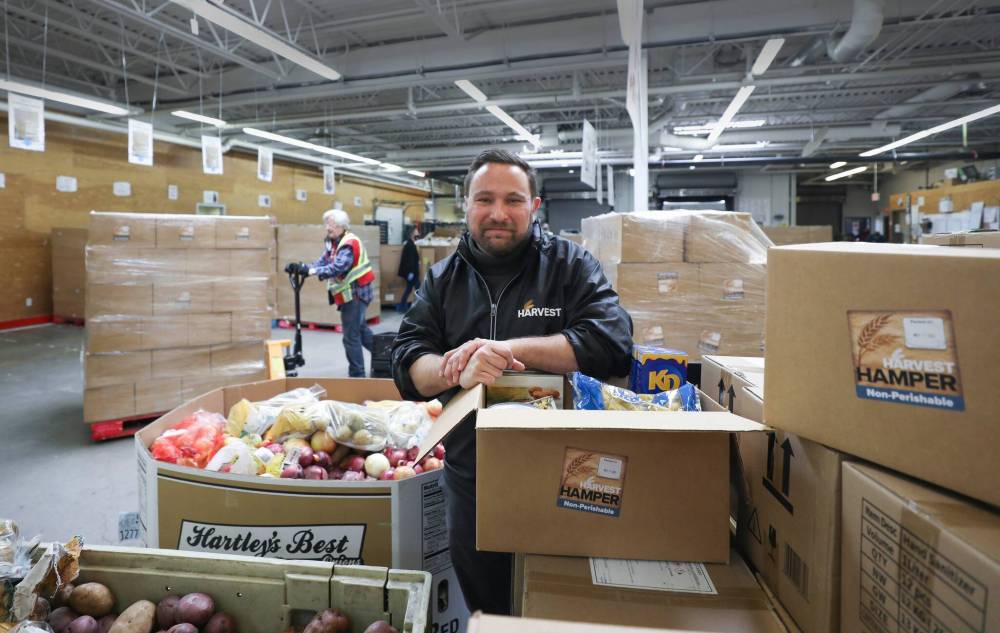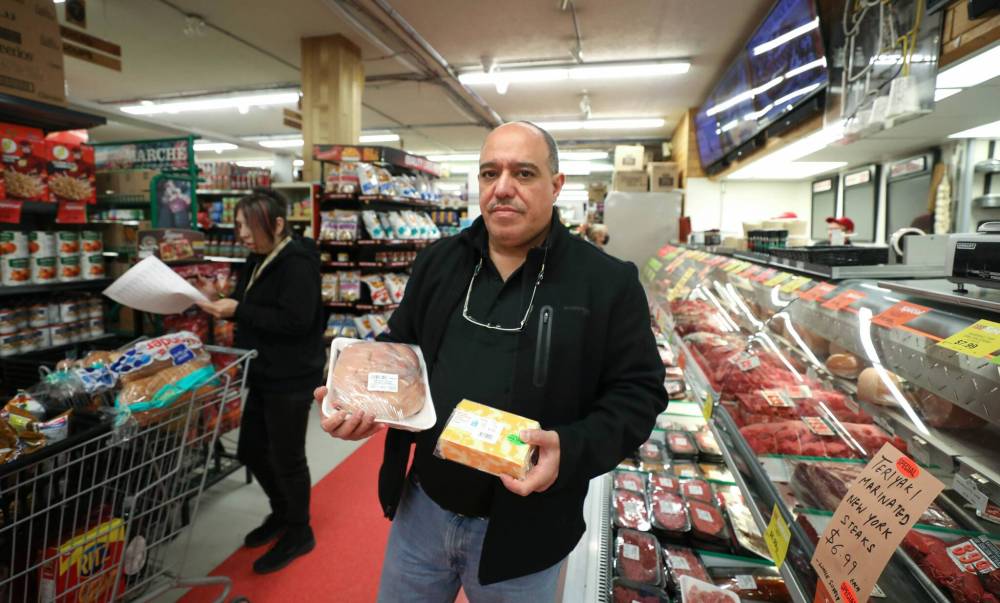Food inflation keeps hard pinch on Manitobans
Advertisement
Read this article for free:
or
Already have an account? Log in here »
To continue reading, please subscribe:
Monthly Digital Subscription
$19 $0 for the first 4 weeks*
- Enjoy unlimited reading on winnipegfreepress.com
- Read the E-Edition, our digital replica newspaper
- Access News Break, our award-winning app
- Play interactive puzzles
*No charge for 4 weeks then billed as $19 every four weeks (new subscribers and qualified returning subscribers only). Cancel anytime.
Read unlimited articles for free today:
or
Already have an account? Log in here »
Hey there, time traveller!
This article was published 30/05/2023 (330 days ago), so information in it may no longer be current.
Janna Ingeberg says high inflation has taken a bite out of her budget for healthy food. Sometimes, she can only afford to buy a bag of carrots from the produce aisle.
“It’s absolutely mortifying,” she said. “It affects low-income people the most — the people who are already struggling.”
Ingeberg said she spends about $100 a week on groceries, and shops at multiple stores to get the best deals. During the weekend, she stopped at a Food Fare location and spent her weekly budget of $75 on cat food, juice, two cans of soup, and something to tuck away in the freezer.

Mike Deal / Winnipeg Free Press
Janna Ingeberg says high inflation has taken a bite out of her budget for healthy food.
“I’ve started making my own bread at home because the cost of bread is ridiculous,” she said. “Even those foods like Kraft Dinner, things that people who are low-income rely on as pantry staples, are hard to afford now.”
The most recent Canada Consumer Price Index, published Tuesday, shows food inflation in Manitoba is the highest in the country at 10.4 per cent, compared with 9.1 per cent nationally.
Craig Suderman says he spends $50-$75 per week on groceries and has noticed an “astronomical” increase in pet food. He said it becomes more challenging to afford groceries toward the end of his pay period, but tries to cut costs when he can.
“I do a lot of scratch cooking, so I cut down a little bit in that way,” said Suderman. “I usually just buy what I need and whatever it costs, it costs.”
In March, some 47,000 Manitobans relied on a food bank to meet a portion of their monthly household food security needs, Harvest Manitoba chief executive officer Vince Barletta said.

Mike Deal / Winnipeg Free Press
Craig Suderman says he spends $50-$75 per week on groceries and has noticed an “astronomical” increase in pet food.
That’s more than 22,000 households using a food bank somewhere in the province, he said. There has been a 100 per cent increase in the past year-and-a-half at the Winnipeg non-profit organization, which collects and distributes healthy food to hungry families.
“About one in four people that use a food bank these days are folks with jobs and, historically, people on social assistance, people on disability benefits, and others that are facing financial difficulties,” said Barletta.
Other reasons as to why more people are needing to access a food bank in the province involve the costs of inflation, the influx of Ukrainian refugees displaced by war, and how the organization is serving more communities in northern Manitoba, he said.
Survey data in the 2021-22 Harvest Manitoba report showed 67.5 per cent of food bank clients were predominantly female and were an average age of 49.5 years old.
The survey also showed many respondents identified with having an annual income of $10,000-$20,000 per year, with 41 per cent receiving less than $10,000 annually.

Ruth Bonneville / Winnipeg Free Press Files
In March, some 47,000 Manitobans relied on a food bank to meet a portion of their monthly household food security needs, Harvest Manitoba chief executive officer Vince Barletta said.
Munther Zeid, owner of the local Food Fare chain, said he finds most people are making sacrifices on what to purchase off their grocery list. It’s important to compare prices at various stores, he added.
“I’m trying to keep my prices fair because my family shops at my store and I want to make it reasonable for them and for everybody else,” said Zeid, who has seven children. “I know what it costs to feed a family and to feed them well without any deprivation.”
Because of supply chain issues exposed by the COVID-19 pandemic, Zeid said it can be cheaper to buy a bag of carrots, for example, from B.C. than strictly purchasing supplies from local manufacturers.
“We’re trying to keep our prices as low as possible by doing that,” he said.
Ultimately, food manufacturers rotate deals, so different store owners can maximize stocking up on key grocery items and offer specials to their customers, said Zeid.

Ruth Bonneville / Winnipeg Free Press Files
Munther Zeid, owner of the local Food Fare chain, said he finds most people are making sacrifices on what to purchase off their grocery list.
Meanwhile, as the price of groceries continues to rise, Ingeberg said Canadians are tired and disgruntled.
tessa.adamski@freepress.mb.ca







